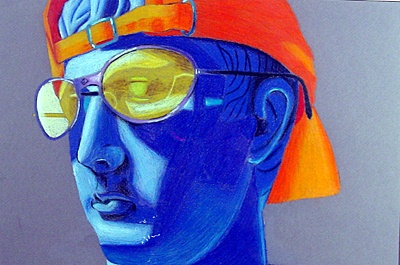All Nonfiction
- Bullying
- Books
- Academic
- Author Interviews
- Celebrity interviews
- College Articles
- College Essays
- Educator of the Year
- Heroes
- Interviews
- Memoir
- Personal Experience
- Sports
- Travel & Culture
All Opinions
- Bullying
- Current Events / Politics
- Discrimination
- Drugs / Alcohol / Smoking
- Entertainment / Celebrities
- Environment
- Love / Relationships
- Movies / Music / TV
- Pop Culture / Trends
- School / College
- Social Issues / Civics
- Spirituality / Religion
- Sports / Hobbies
All Hot Topics
- Bullying
- Community Service
- Environment
- Health
- Letters to the Editor
- Pride & Prejudice
- What Matters
- Back
Summer Guide
- Program Links
- Program Reviews
- Back
College Guide
- College Links
- College Reviews
- College Essays
- College Articles
- Back
Superfreakonomics: Global Cooling, Patriotic Prostitutes and why Suicide Bombers should buy Life Ins
Superfreakonomics is a very interesting book with many new ideas, strange topics, and debunking aspects, and plenty of irony.
This book starts with an introduction that explains what freakonomics is all about. It explains the premise that freakonomics is all about how people respond and act to certain incentives. For example, it starts with a story about you being at a party and getting drunk. You decide that you should be safe and not drive home. It then states the facts that on a per-mile basis, walking drunk is more dangerous than driving drunk (even including the other people that would be involved in a driving accident. It doesn’t endorse driving drunk but instead suggests that you hail a taxi or get a friend to help you get home. It ends with “Because friends don’t let friends walk drunk.”
There are is a very diverse set of topics in this book (each of the 6-7 chapters has about 10 very different topics within it). For example Chapter 3 starts with the (1960s) story of Kitty Genovese (attack in the street and died after multiple attacks and 30 minutes; 38 witnesses didn’t have a single police tip). However, it also states that the police were called (though not as a homicide call – an assault case). The chapter than jumps around to the crime explosion in the 1960s, how TV might have influenced crime, altruism in general, donations for natural disasters, lab experiments to test for altruism, the kidney donor program, to the difference between a lab test and real life, and finally back to Kitty Genovese.
This book also touches on pretty much all of the major issues facing our society today. It talks about prostitution and crime in general and why it happens (chapters 1 and 3). It talks about suicide bombers (chapter 2). It talks about modern medicine (chapter 2). It talks about human nature (chapter 3). It talks about inventing (chapter 4). It also talks about Global warming, climate change, and many (inexpensive) fixes (chapter 5). And of course it spends the epilogue explains that when taught, monkeys can create many aspects that exist in human society (such as money, law of supply and demand, and prostitution). Unfortunately (or perhaps fortunately) this last experiment was eventually cancelled because some people complained of the monkey’s brains being messed with.
This book is chalk full of irony. For example, in Chapter 1 we explained the story that you downed a few too many tequilas and were going to go home. You realize that you are drunk and decide to be safe and walk home. Simple, right? However, looking at the statistics, you would actually be safer driving drunk, even including all the extra people that would be involved in a car crash. This would then lead you to the decision that you should walk home. Then you realize that the government has decided that despite the statistics, it is illegal to drive drunk, but it is legal to walk drunk. Of course the best case scenario is to get a ride from someone that isn’t drunk (e.g. a friend or a cab driver).
Although the author does occasionally give his opinion, usually the author simply states the facts and lets you decide for yourself. For example, in the Chapter 4, he never comes and says the best inventions are always the cheapest and such. He instead presents the data for the doctors washing their hands, the invention of forceps, and the seat belt. It also worth noting the author simply presents the world as it is and does not imply that you should follow his suggestions he just presents the data and results.
The book also spends a lot of time debunking commonly accepted facts. In Chapter 1 it explains that it is safer to drive drunk than to walk drunk (though the opposite is commonly accepted, mainly because the government for you to think that way). In Chapter 2 it explains that doctors actually wash their hands a lot less than is commonly accepted. In Chapter 3 it explains that in the Genovese case people did call the police, and try to get help even though opposite was published in many papers. In Chapter 4 it explains the seat belts are about as protective for kids as child seats are (even though some states actually require these child seats to be used for a certain age group). In Chapter 5 it explains that even if climate change is a problem there are quite a few rather inexpensive things we can do to fix this problem (even though the governments aren’t going to do anything about it). In the Epilogue it explains that monkeys are people too (they are just different, don’t discriminate). None of these are commonly accepted ideas, yet.

Similar Articles
JOIN THE DISCUSSION
This article has 0 comments.
